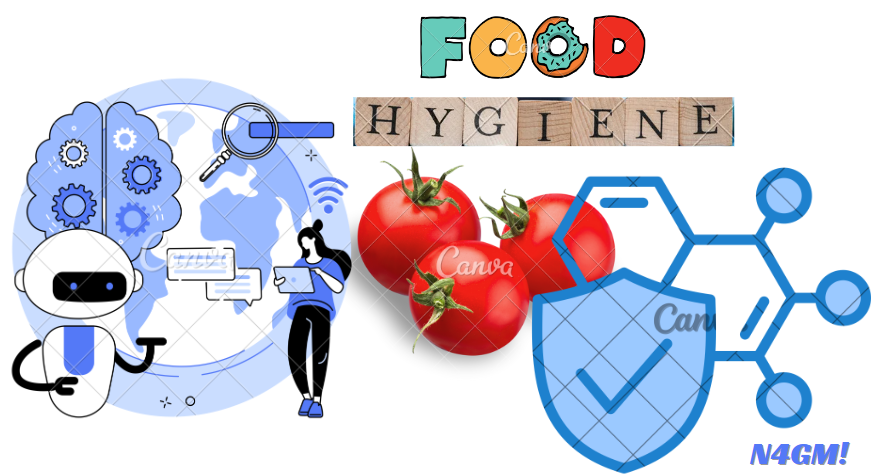In recent years, the food industry has seen remarkable innovation, especially in the realm of food hygiene. Ensuring the safety and cleanliness of food is paramount, not only to meet regulatory standards but also to cater to the increasing consumer demand for hygienic food handling and proper food sanitation.
This blog delves into the latest technological advances that are setting new benchmarks in maintaining food hygiene standards. From digital transformation to novel processing techniques, let’s explore how these innovations are revolutionizing the way we handle, process, and consume food.
Digital Transformation in Food Safety

The first game-changer in our list is the digital transformation sweeping across the food industry.
1. smart sensors and data analytics
By integrating smart sensors and data analytics, companies can now monitor and control the hygiene levels of their operations in real-time.
For Example - Companies can monitor factors like temperature and humidity during storage and transportation of goods(Foods). This real-time data allows for early detection of problems that could impact food safety.This advance aids in the early detection of potential contamination and ensures that food handling processes meet the highest cleanliness and safety standards.
2. Blockchain Technology (Traceability)
Another facet of digital transformation is the implementation of blockchain technology for enhanced traceability.
In this technique, you can trace the process of any crop like strawberry, from its germination till its sale in the market. Through this technique, you can identify food items before they get spoiled and take concrete steps to improve them.
This ensures every step of the food supply chain is transparent, from farm to fork, making tracking and preventing hygiene breaches easier.
Digital transformation creates not only greater transparency and safety but also allows companies to take a proactive approach towards food hygiene management. Predictive analytics tools can foresee potential hazards by analyzing patterns across large datasets – helping companies avoid problems before they arise.
High-Pressure Processing
High-pressure processing (HPP), or hyperbaric processing, uses extreme pressure to inactivate pathogens in food without using high temperatures, which could compromise flavor or nutritional content. HPP not only extends shelf life while staying safe to consume but it’s a significant leap forward for proper food sanitation practices.
High-pressure processing has proven its versatility within the food industry by opening it up for innovation within food product development, permitting new, healthier food items that would not be possible using traditional heat processing methods alone. It supports the creation of foods with enhanced flavors and improved nutritional profiles without needing preservatives – meeting consumer desires for clean-label products.
Pulsed Electric Fields
Pulsed Electric Fields (PEF) technology is another non-thermal food processing method, using short pulses of electricity to eliminate microorganisms from food items like juice and milk without altering nutritional value or taste. PEF offers significant advancements for maintaining food hygiene without needing additives or traditional heat pasteurization methods.
Pulsed Electric Fields technology also plays a pivotal role in environmental sustainability within the food industry, by cutting energy usage and chemical preservative usage and thus decreasing the carbon footprint associated with processing food products. Coupled with its ability to enhance safety and quality standards for produce production, PEF technology makes an appealing option for producers looking to meet rising consumer demand for sustainable foods that contribute positively to society.
As industries continue to seek greener alternatives, PEF stands out not only for its effectiveness in maintaining food hygiene standards but also for its role in promoting a more sustainable future for food production.
Robotics in Food Manufacturing
Robotics in Food Manufacturing pic.twitter.com/Noc5ocKbAL
— Sachin Sharma (@Sachin10037) March 14, 2024
Robotics technology has found its way into food manufacturing, offering a new level of precision and cleanliness. Robots can handle food without the risk of contamination that might come from human contact, ensuring hygienic food handling throughout the production process. Moreover, robots can operate in environments sanitized to levels that might be uncomfortable or unsafe for human workers, maintaining a sterile production space.
The integration of robotics in food manufacturing not only elevates hygiene standards but also significantly enhances efficiency and productivity. Automated systems are capable of performing repetitive tasks with consistent precision and speed, far surpassing human capabilities. This efficiency reduces production time and costs, allowing for a faster response to market demands.
Additionally, robots equipped with advanced sensors can conduct quality control checks during manufacturing, identifying and removing defective products. This ensures that only food items that meet strict quality and hygiene standards reach consumers, further reinforcing the safety and reliability of food products in the market.
Ultraviolet Light Treatment
Lastly, Ultraviolet (UV) Light treatment is an innovative technology used to disinfect food surfaces and purify water in food production. UV light effectively kills bacteria and viruses without the use of chemicals, making it an eco-friendly alternative to traditional sanitation methods. This technology plays a crucial role in ensuring food products’ hygienic preparation and packaging.
The Future of Food Safety
Technological advances are significantly impacting our approach to food hygiene. These innovations offer promising solutions to age-old problems, ensuring that food safety is not only maintained but enhanced. As consumers continue to prioritize health and cleanliness in their food choices, the adoption of these technologies will become increasingly important.
The future of food safety looks bright, with technology leading the way in ensuring that our food is clean, safe, and delicious. Let’s embrace these changes, confident in the knowledge that the food we eat is held to the highest standards of hygiene and safety.






